Revitalized, we went to a full breakfast. The sleekly handsome dining room was buzzing with guests!
He carries an ancient gold ingot, which is why celebrants of Lunar New Year eat dumplings that resemble its shape!
A "wishing wall" was full of hanging hopes.
Kevin and two shop girls were authentically impressed that Lewis could sign his name in the Guest Book in traditional Chinese characters. They only know how to write the modern "casual" style, and they admired his calligraphy-like penmanship strokes. I was so proud! He blushed.
On the topic of calligraphy, China's is elegantly written in ink with a brush, instead of a pen. It has been that way for millennia, whereas Europeans used feather quills and fountain pens. (China invented ink during the Zhou Dynasty, 3000 years ago). Writing the characters of the Chinese "alphabet" with a paintbrush is far more complicated than using a pen. Many variables come together—under the skill of the writer—to produce art-like compositions: brush shapes, types of hair in the brush, ink density, color pigment, paper texture, paper absorption rate, humidity, brushstroke pressure, writing speed, the balance of thin and bold strokes, a writer’s possible deceleration, and the author’s intention. Surrounding everything are the unintentional things that happened, including wuyi: how the calligrapher followed his heart. All of it gives “spirit” to the final product—a true work of art!
Turn-of-the-century mansions (the city has plenty of them) faced courtyards of outdoor eateries.
After exploring, we had enough time to freshen in our room before we were due to meet Shirlyn in our hotel bar for cocktails.
I got to the lounge first… which was still serving tea...
...and cake! Lewis admired the chocolate pink pump! (on Swiss cheese?) A fanciful tea urn and wooden tea caddy provided me with some soothing Darjeeling.
While using the hotel's iMac station (in a cozy library nook), I watched folks order French presses of tea. An hour whoosed by with some handsome people-watching.
By then, bar patrons began ordering cocktails.
Shirlyn waltzed through the lobby and spotted us in the bar. She ordered a perfectly-pink Cosmopolitan—unlike the overly red ones that are often made.
Acknowledging her homeland, I sipped a Singapore Sling.
After drinks, we caught a cab to Zhenning Road and admired China's modern illumination of urban scenery.
A waitress promptly approached and took my coffee order. The result was a perfectly foamed café au lait.
We bypassed the waffle/viennoiserie station, but I added its jam to my hot oatmeal (which also included brown sugar, cinnamon, and raisins). It ended up tasting like plum pudding, which is always lovely.
It was a DELIGHTFUL to have tripe at breakfast-time. I LOVE tripe! Unlike most sugar-crazed Americans, Lewis and I like some savory foods in the morning. Their tripe was flavorful with great jus. The restaurant's buffet showcased two types of bacon: "soft-cooked" and "crispy". Each was perfect... just like the fresh grapefruit juice. Omelet stations and a crêpe counter were in "full swing". They served Tau Foo Fah (seen below), which I always enjoy in NYC's Chinatown. It's a delectable soy bean (a.k.a. silken tofu) pudding in a sweet syrup infused with ginger and pandan. It's nutritious, too.
We still beat Kevin to the Lobby.
We also caught a glimpse of our driver meandering around the place, chatting with employees, and full of curiosity. They sped us to The Bund: the city's riverfront. The Huangpu River is fed from the East China Sea that laps against the city. As a seaside city, Shanghai prioritizes access to its waterfront and keeps it beautiful. In contrast, Manhattan greedily barred its waterfront from public use, in favor of overpriced skyscrapers and apartment buildings. Thankfully, many other first-world cities preserve their waterfronts. Shanghai is one of those cities. It showcases its curvy river with promenades, hanging gardens, open-air eateries, and boat tours.
During the previous night, our friends walked us along the famous and picturesque Bund, but it was a treasure to view in daylight. Panels of "hanging gardens" adorned the wall that upheld the boardwalk. I would love to have one of those at my future home.
Above, the two "world globes" sit at the foot of the Oriental Pearl TV Tower (even though Asians don't use the politically-incorrect term "Oriental" anymore). It resembles a Christmas tree topper! Do you see the skyscraper with the open "window" at its top? Locals nicknamed it the "Bottle Opener building".
We also caught a glimpse of our driver meandering around the place, chatting with employees, and full of curiosity. They sped us to The Bund: the city's riverfront. The Huangpu River is fed from the East China Sea that laps against the city. As a seaside city, Shanghai prioritizes access to its waterfront and keeps it beautiful. In contrast, Manhattan greedily barred its waterfront from public use, in favor of overpriced skyscrapers and apartment buildings. Thankfully, many other first-world cities preserve their waterfronts. Shanghai is one of those cities. It showcases its curvy river with promenades, hanging gardens, open-air eateries, and boat tours.
Above, the two "world globes" sit at the foot of the Oriental Pearl TV Tower (even though Asians don't use the politically-incorrect term "Oriental" anymore). It resembles a Christmas tree topper! Do you see the skyscraper with the open "window" at its top? Locals nicknamed it the "Bottle Opener building".
The circular Shanghai Tower is one of the tallest in the world. It has two walls.
The outer wall, entirely made of glass, actually hangs onto the inner wall. The space in between provides sunlit garden/park space for each floor! Some floors are commercial, and others are residential.
That is amazing architecture.
*In contrast, NYC builds unnecessary skyscrapers every year, and none compensate with "green spaces" like that. To see the concrete scraps that NYC labels as "parks" throughout its greedy overdevelopment, please use this link:
On our side of The Bund, Art Moderne buildings of smaller scale festooned the boulevard. Seen below, the clocktower was made by the same ironworks foundry and clockmakers that created Big Ben in London. The chimes sound beautiful.
Above is the 1926 Sassoon building, built by a tycoon named Sir Victor Sassoon. His lavish home was in the top floors and pyramid. It had a hotel named the Cathay House, which is still famously sumptuous as the Fairmont Peace Hotel. Folklore about its tall neighbor—built by the Bank of China in 1934—is that Mr. Sassoon (of Iraqi Jewish heritage) used his British connections to prevent the bank's building from exceeding the height of his… thus continuing the reputation of his as the tallest building in Shanghai. Ergo, the bank's building is shorter. Kevin considered it as another embarrassment of Western Powers subjugating Easter Powers. Nonetheless, the bank is a fine example of Chinese Art Deco style.
Above is the 1926 Sassoon building, built by a tycoon named Sir Victor Sassoon. His lavish home was in the top floors and pyramid. It had a hotel named the Cathay House, which is still famously sumptuous as the Fairmont Peace Hotel. Folklore about its tall neighbor—built by the Bank of China in 1934—is that Mr. Sassoon (of Iraqi Jewish heritage) used his British connections to prevent the bank's building from exceeding the height of his… thus continuing the reputation of his as the tallest building in Shanghai. Ergo, the bank's building is shorter. Kevin considered it as another embarrassment of Western Powers subjugating Easter Powers. Nonetheless, the bank is a fine example of Chinese Art Deco style.
The two buildings are separated by the busiest road in the city: the Nanjing Road, also called Park Lane.
In 2000, the government made the road pedestrian-only, which was immensely helpful to businesses and retailers. It is 1,200 meters of nice scenery. People snap photographs of everything—including interracial couples.
Commuters use a subway to cross the river, but Kevin took us via the famous Sightseeing Tunnel. It gives a light show, as you travel through. Another cool thing to watch is how each train car (holding up to 20 people) completes its trips at a turntable that positions it precisely on the tracks to go in the next direction. It's totally automatic, including the door operation.
On the other side, we found ourselves in a lush garden. Kevin offered to bring us to the top of a skyscraper for a view of the city. We refrain from wasting time to get so high above places, and you can understand why by using this link:
In 2000, the government made the road pedestrian-only, which was immensely helpful to businesses and retailers. It is 1,200 meters of nice scenery. People snap photographs of everything—including interracial couples.
On the other side, we found ourselves in a lush garden. Kevin offered to bring us to the top of a skyscraper for a view of the city. We refrain from wasting time to get so high above places, and you can understand why by using this link:
Refusing the long queues to get to the top of the skyscrapers, we opted for authentic soup dumplings. Shanghai is renown for them. We also prefer to enjoy places by being amidst them, instead of wasting time to get isolated above them. Kevin replied, "Sure. The car is awaiting my call. I know the perfect place to eat, which isn't far from our next destination." He took us to a historical neighborhood called the Old City. It is the core of Shanghai, begun in the 1100s. In 1403, a temple was dedicated to the City Gods: three deities who protect the city. It still exists, and residents venerate the gods while praying for good fortune and peace. Built in 1554, part of the city wall survives in that area.
From our drop-off point, we meandered through narrow pedestrian-only streets, across a zig-zag wooden bridge (shaped that way for good luck)...
...and through a square that hosted a Sunday Food Market. That market was where I saw the most citizens wearing face-masks during our whole trip. Aside from that, only scooter owners used them on the highways—often instead of helmets. They politely wear them to contain their own germs... not from fear of other people's germs (like outsiders presume).
From our drop-off point, we meandered through narrow pedestrian-only streets, across a zig-zag wooden bridge (shaped that way for good luck)...
The food vendors were aromatically wonderful, and the shopkeepers were politely non-pushy. At home, we're accustomed to aggressive street-hawkers who nearly accost to make you buy from them (like a third-world country). China was much nicer... and with cleaner presentations. We especially liked the covered alleys... reminiscent of medieval cities, yet modernized and tidy.
Soup dumplings (xiaolongbao) originated in Shanghai in the 1870s. Supposedly, their creator was a restauranteur named Huang Mingxian, who included aspic (meat/broth gelatin) in his minced filling, which liquified during steaming.
We ate three servings of soup dumplings, and they were scrumptious. Slightly smaller than NYC Chinatown versions, they were perfectly-made with tightly-folded twists at the top.
A floorshow started in the main dining room, and that surprised Kevin because he never experienced one there before. A costumed man performed sword and fan dances. I didn't take photos of the actor, but his mask and regalia looked awesome. Kevin told me that some performances (in historic costumes) depict the deities that Chinese people venerate. As a polytheistic society, China has dozens of gods. Lewis' favorite is Tsai Shen, who is the God of Fortune. He descends from Heaven on the first day of the Lunar New Year (operating on a much older calendar than the modern one) and grants fortune to those who welcome him and respect him. He looks like this...
Below, notice the propensity of modern buildings that emulate older dynastic styles—including the Starbucks.
Our luncheon destination was in an old-world milieu, but the lobby was modern. A sleek elevator was needed to get to the 3rd floor restaurant. Inside, historic interiors were reconstructed. Kevin spoke with the hostess and got us a private room: wood planking, historic wooden doors, window shutters, and vintage furniture.
Soup dumplings (xiaolongbao) originated in Shanghai in the 1870s. Supposedly, their creator was a restauranteur named Huang Mingxian, who included aspic (meat/broth gelatin) in his minced filling, which liquified during steaming.
We ate three servings of soup dumplings, and they were scrumptious. Slightly smaller than NYC Chinatown versions, they were perfectly-made with tightly-folded twists at the top.
A floorshow started in the main dining room, and that surprised Kevin because he never experienced one there before. A costumed man performed sword and fan dances. I didn't take photos of the actor, but his mask and regalia looked awesome. Kevin told me that some performances (in historic costumes) depict the deities that Chinese people venerate. As a polytheistic society, China has dozens of gods. Lewis' favorite is Tsai Shen, who is the God of Fortune. He descends from Heaven on the first day of the Lunar New Year (operating on a much older calendar than the modern one) and grants fortune to those who welcome him and respect him. He looks like this...
He carries an ancient gold ingot, which is why celebrants of Lunar New Year eat dumplings that resemble its shape!
After our succulent meal, we ventured outside through an open door and found an ancient bell. Bells in Asia are rung by swinging a horizontal pole at them. The harder you strike the bell, the louder it rings. In Western Culture, bells have a clapper dangling inside them, and swinging the bell makes it ring. It's fun to take "unexpected turns" and discover things.
Having overheard me describe how I enjoy green tea, Kevin offered us a formal tea tasting, nearby. It was our first experience in a teahouse. Outside of the USA, a teashop is the name of a place that sells tea, but a teahouse is an eatery that serves it. Just like in England, people gather to socialize while drinking tea and nibbling food.
Having overheard me describe how I enjoy green tea, Kevin offered us a formal tea tasting, nearby. It was our first experience in a teahouse. Outside of the USA, a teashop is the name of a place that sells tea, but a teahouse is an eatery that serves it. Just like in England, people gather to socialize while drinking tea and nibbling food.
In China (which originated tea-drinking for the world), tea is so popular that it is served free at restaurants, just as water is freely given. Some teahouses offer amusing and informative tea presentations that are akin to wine tastings. Similar to artisanal chocolates, there is artistry and craftsmanship involved in the growing, harvesting, and drying of the tea leaves. The success of tea plantations pivots on terroir: location, soil type, elevation, climate, rainfall, drainage, and amount of sunlight. Teas have different harvesting times, and certain ones are hand-picked to preserve their delicacy.
In a private room, a cheerful woman lusciously described each tea varietal, its climate of origin, method of harvest, and preparation method. We watched a jasmine flower as it blossomed open inside one teapot. In other teapots, jasmine leaves unfurled, each producing different colored/tasting teas. We sampled an expensive type of aged tea named Pu-er that is sold as "tile cakes" (compressed bricks). It has an earthy taste due to fermentation underground for several years. Centuries ago, the valuable tea was compressed in stone moulds for easier transport. Lewis prefers his Pu-er to be sold as loose-leaf tea.
An oolong was our favorite. Meaning "black dragon", oolong tea originated in China, centuries ago. The best is harvested from the Fujian Province. Since the 1700s, it was also cultivated in Taiwan.
We were amused by the "pissing boy" (a.k.a. "pee-pee boy"), who only does his naughty public deed when doused with hot water. In that way, the clay figurine is a thermometer to confirm that the water is hot enough. To use it, you must submerge it in room-temperature water and some water enters the hollow figurine through a tiny hole. Then, you put him on the table or tea-tray. The water will remain inside him. That is a nifty trick. But the next trick happens when you pour boiling water on his head. (It only works with hot water). Thermodynamics within the figurine cause the lukewarm water to squirt out from his penis in a long stream! It's quite a trick!
When the hot water touches the boy's head, physics causes the air inside him to expand, and that pushes the water out. The hotter the water, the farther he pisses. That is the thermometer aspect. We were astonished to learn that such figurines were used as far back as the Tang Dynasty (618-906).
Another "trick" is the ceramic reptile statue that turns colors or becomes gold when hot water is poured on it.
As a souvenir, Lewis bought this box of loose oolong tea. It's delicious with a subtle honeyed flavor.
*To see our Afternoon Tea at Claridge's Hotel in London, please use this link:
*To see the teatime that we loved at the Lord Mayor's Lounge in Dublin, please use this link:
Feeling revitalized, we arrived at the remarkable Yuyuan Garden of Happiness. It sounded like our kind of place!
Built in 1577, it was a retirement area for Pan En, a governmental minister for the Jiajing Emperor. His son was the governor of Sichuan and built the garden for him. (The Sichuan Province contributed one of China's 5 great cooking styles).
Since 1961, the garden has been accessible to the public. It covers 5 acres with Suzhou-style "garden rooms", bridges over streams, artistic passageways, sculpture, temples, koi fish ponds, and rockeries (rock gardens). It embodies classical Chinese garden design with delicate features, subtlety, and elegance.
The grand centerpiece is the rock garden, which consists of several rockeries that blend with the landscaping, form doorways, uphold pavilions and footbridges, and encircle ponds and gazebos. Assembled by hand, the artistry of their shapes and intricacies was intriguing! It was our first time witnessing such a thing. We were amazed.
The grand centerpiece is the rock garden, which consists of several rockeries that blend with the landscaping, form doorways, uphold pavilions and footbridges, and encircle ponds and gazebos. Assembled by hand, the artistry of their shapes and intricacies was intriguing! It was our first time witnessing such a thing. We were amazed.
There are numerous covered walkways, which bend at angles to divert you, so you must pause (instead of walking in a line straight ahead) and appreciate the scenery. The pavilions were furnished with antiques: impressively-carved wooden chairs. Classic wooden lanterns with dangling tassels hang overhead.
The layout was evocative of a cozy waterside village: many doorways and windows catty-cornered and juxtaposed. Every doorway is different. They frame each other, including clusters of faux windows to create an illusion of abutting homes.
An eye-catching dragon topped one of the fences... in curvaceous splendor.
Seen below, a courtyard featured an open-air theatre and a sheltered stage for Chinese opera and plays.
Each part is intended to be viewed prettily from every conceivable angle. Even the floor tiling is mosiac artwork!
Afterwards, our driver meandered us through a less prosperous (but no less friendly) part of town. Shanty shacks were juxtaposed with newer apartment buildings.
Within the courtyard of the renowned Confucian Temple of Shanghai, people hosted a weekly Used Book Fair, where they traded and sold books and magazines. It's one of the city's biggest book markets. (China invented the printing press in the 11th century, versus Germany making one in the 15th century). Kevin was proud to take us inside.
Seen above: a genie in the bottle! Ha ha!
An eye-catching dragon topped one of the fences... in curvaceous splendor.
Afterwards, our driver meandered us through a less prosperous (but no less friendly) part of town. Shanty shacks were juxtaposed with newer apartment buildings.
The temple venerates Confucius for his scholarly wisdom, and it resembles the original one in his hometown of Qufu. Before Anglicization, Confucius was spelled Kung Fu-tzu.
The Temple of Confucius was founded during the Yuan Dynasty (1271-1368) as a prestigious learning center. It was battered during China's tumultuous history, but the Communist government issued an edict in 1995 for its restoration.
The Temple of Confucius was founded during the Yuan Dynasty (1271-1368) as a prestigious learning center. It was battered during China's tumultuous history, but the Communist government issued an edict in 1995 for its restoration.
Volunteering for the ministry, a bright-eyed girl happily and respectfully toured us through the temple, its teapot collection, and the gift shop.
The courtyard's incense smelled nice. By the rippling fishpond, a quintet of older gents played traditional music on historic instruments (on Sundays only, which was a fun coincidence for us).
A "wishing wall" was full of hanging hopes.
Kevin and two shop girls were authentically impressed that Lewis could sign his name in the Guest Book in traditional Chinese characters. They only know how to write the modern "casual" style, and they admired his calligraphy-like penmanship strokes. I was so proud! He blushed.
On the topic of calligraphy, China's is elegantly written in ink with a brush, instead of a pen. It has been that way for millennia, whereas Europeans used feather quills and fountain pens. (China invented ink during the Zhou Dynasty, 3000 years ago). Writing the characters of the Chinese "alphabet" with a paintbrush is far more complicated than using a pen. Many variables come together—under the skill of the writer—to produce art-like compositions: brush shapes, types of hair in the brush, ink density, color pigment, paper texture, paper absorption rate, humidity, brushstroke pressure, writing speed, the balance of thin and bold strokes, a writer’s possible deceleration, and the author’s intention. Surrounding everything are the unintentional things that happened, including wuyi: how the calligrapher followed his heart. All of it gives “spirit” to the final product—a true work of art!
I will amaze you with another fact: China invented paper in the second century! Papyrus was used in the Mediterranean, but true paper was developed by the ancient Chinese. The oldest piece of paper in the world is from the year 110, and it was found in a tomb within the City of Xi'an in 1957.
Kevin and our driver took us to the "French Quarter": the former French Concession neighborhood. Handsome old-world buildings maintained a low skyline, and their special style that blended Western and Chinese architecture is named Shikumen. Unique to the city, each part of that area has a longtang: a cozy lane with groups of houses interconnected by side-lanes. In some ways, that reminded us of our afternoon in Paris' Latin Quarter. It was like an amalgamation of Paris, Prague, and Florence!
*To see our trip to Florence, please click this link:
*To see our amazing trip to Prague, please use this link:
I got to the lounge first… which was still serving tea...
...and cake! Lewis admired the chocolate pink pump! (on Swiss cheese?) A fanciful tea urn and wooden tea caddy provided me with some soothing Darjeeling.
While using the hotel's iMac station (in a cozy library nook), I watched folks order French presses of tea. An hour whoosed by with some handsome people-watching.
By then, bar patrons began ordering cocktails.
Shirlyn waltzed through the lobby and spotted us in the bar. She ordered a perfectly-pink Cosmopolitan—unlike the overly red ones that are often made.
A "sling" is a sweet alcoholic drink, and the term began in 1759. The Singapore Sling was invented between 1899 and 1915 at Singapore's Raffles Hotel by a bartender named Ngiam Tong Boon, and the gin recipe remains popular.
After drinks, we caught a cab to Zhenning Road and admired China's modern illumination of urban scenery.
Since Shanghai is full of old mansions, Shirlyn thought it'd be fun to have dinner in one. We went to the Jing'an District. The name of the place was Fu 1088, and it exudes 1920s charm.
It won an enviable Michelin star...
...and it's one of the hardest places to get a reservation. Tony Lu is the chef/owner. He operates three mansion-restaurants across the city. Of the 16 rooms, some were open to the public areas, but most were private. Happy voices resounded from upstairs. Proper-looking servers scooted by, and the place smelled wonderful. We had our own private dining room.
Our talented waiter was subserviently respectful and perfectly polite. Always opting to try different and new things, we ordered a bottle of Chinese yellow wine, which the waiter warmed, decanted, and poured into small cups (resembling the kind that you'd eat soft-boiled eggs from). He kept enough for Mike, who was taking the bullet train from his home to Shanghai to dine with us: a one-hour trip. (It's great to have modern infrastructure/travel options).
The restaurant specializes in Shanghainese cuisine prepared in modern and experimental ways. We enjoyed soup dumplings (for comparison to our lunch). Soy-browned fish cakes (with tricky bones) were crispy but moist. The chef's pot-stickers were perfect. For dinner, we chose risotto (it reminded Lewis and I of being in Milan, Italy)! We also ate amazingly-tasty braised pork belly (crispy with sweet sauce), sous-vide soft-boiled eggs with caviar, and bruschetta of crabmeat and vegetable tapenade.
From their tea menu, Shirlyn selected a pot of oolong tea. It was pure and invigorating on our palettes, with a blend of vegetal and sunny-sweet flavors. As a green tea, it has a more rounded taste.
For dessert, we ate white-wine ice cream, served in a custard cream with raisins. Each couple took a taxi home, and I cherished having two lovely new friends on the other side of the world! As our cab sped across the city, we were awed by the resourceful illumination of pretty architecture.
Our talented waiter was subserviently respectful and perfectly polite. Always opting to try different and new things, we ordered a bottle of Chinese yellow wine, which the waiter warmed, decanted, and poured into small cups (resembling the kind that you'd eat soft-boiled eggs from). He kept enough for Mike, who was taking the bullet train from his home to Shanghai to dine with us: a one-hour trip. (It's great to have modern infrastructure/travel options).
The restaurant specializes in Shanghainese cuisine prepared in modern and experimental ways. We enjoyed soup dumplings (for comparison to our lunch). Soy-browned fish cakes (with tricky bones) were crispy but moist. The chef's pot-stickers were perfect. For dinner, we chose risotto (it reminded Lewis and I of being in Milan, Italy)! We also ate amazingly-tasty braised pork belly (crispy with sweet sauce), sous-vide soft-boiled eggs with caviar, and bruschetta of crabmeat and vegetable tapenade.
Our foursome had lively conversations. Using passionate detail, Mike described his homeland, and he encouraged us to visit the kingdom's capital: Copenhagen. Equipped with astounding infrastructure and eco-friendly technology, it's a gorgeous mix of modernity and preserved heritage... similar to Shanghai. Lewis and I vowed to visit it (and we did)!
*To see why Copenhagen is amazing to visit, please use this link:
Onwards to the city of Xi'an!




.JPG)













Shanghai_Construction.jpg)



























































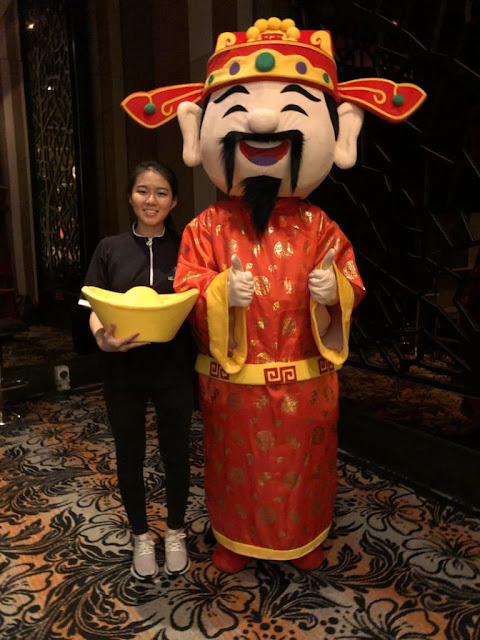




































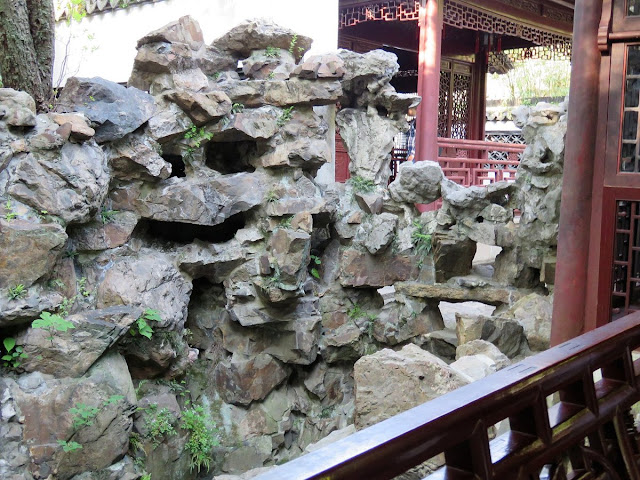






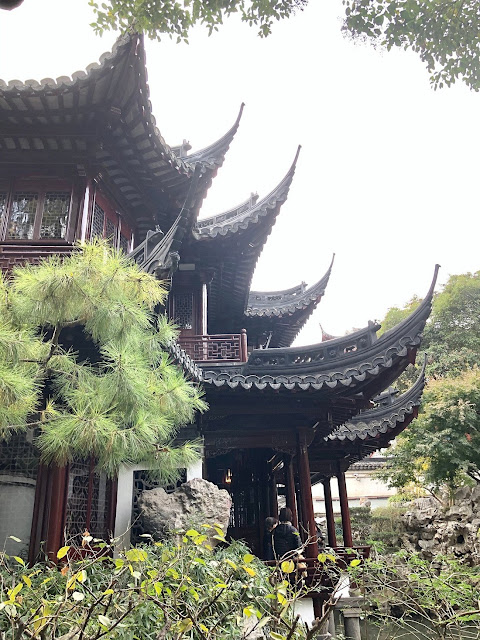

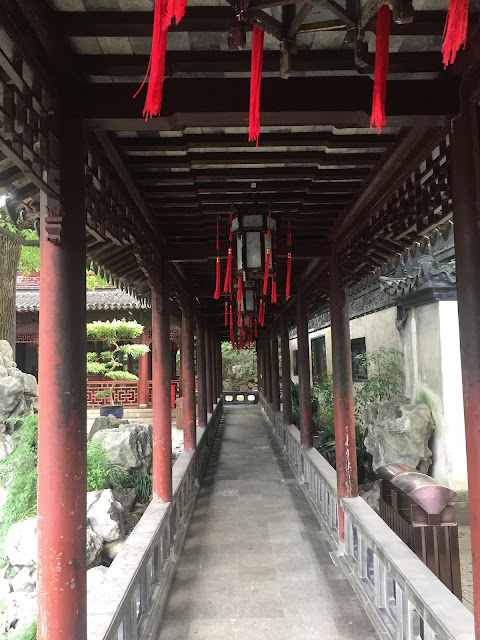




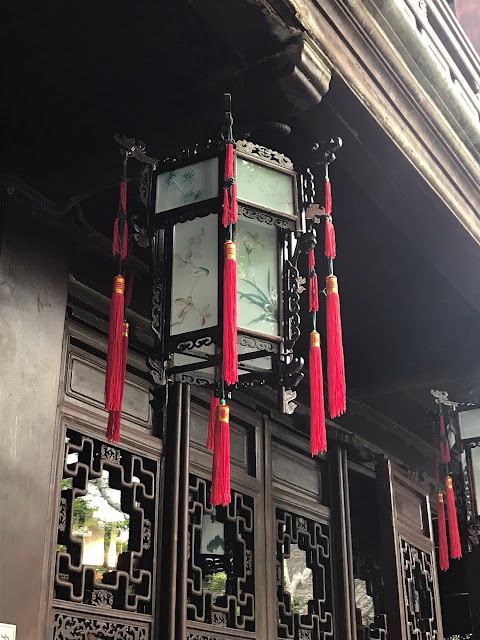

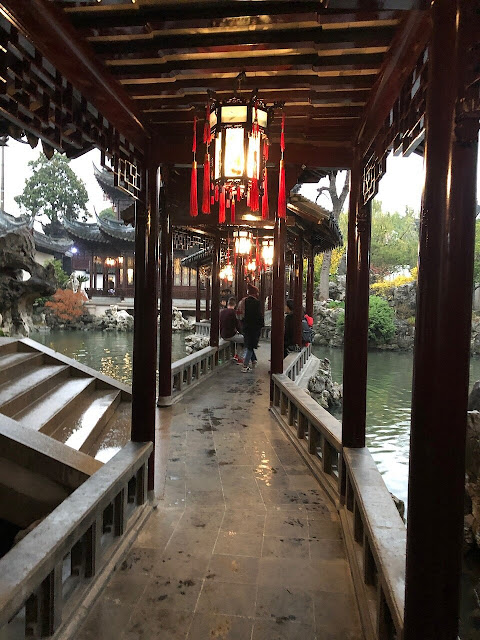































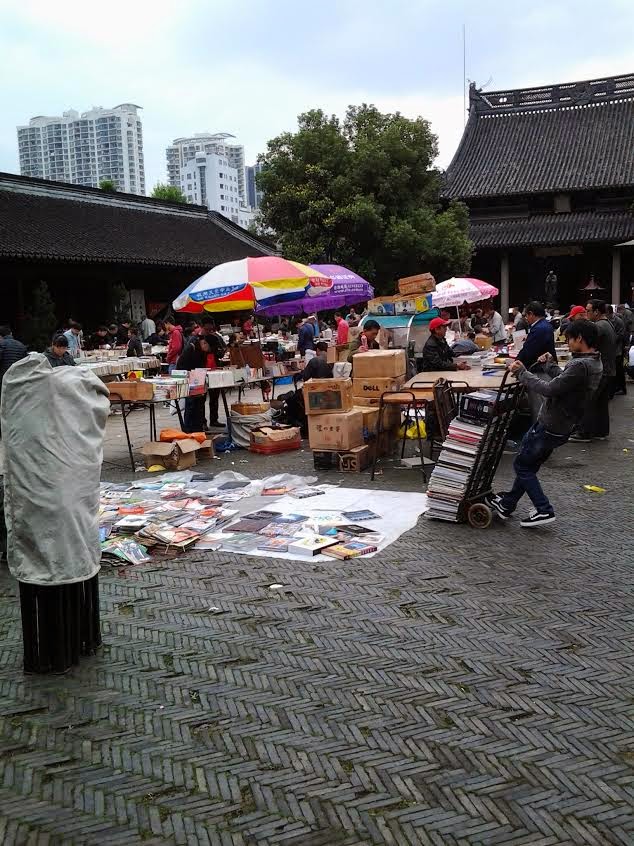









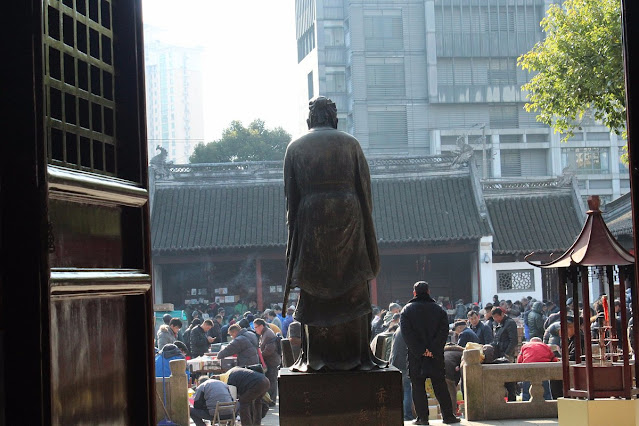


























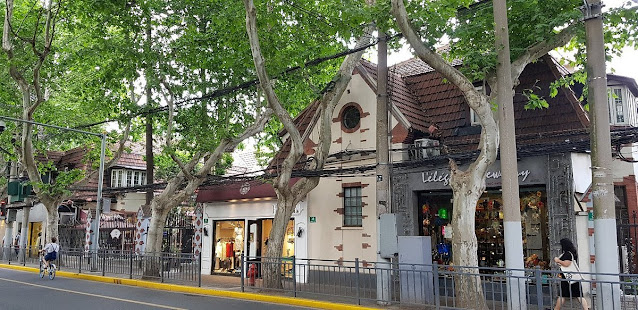



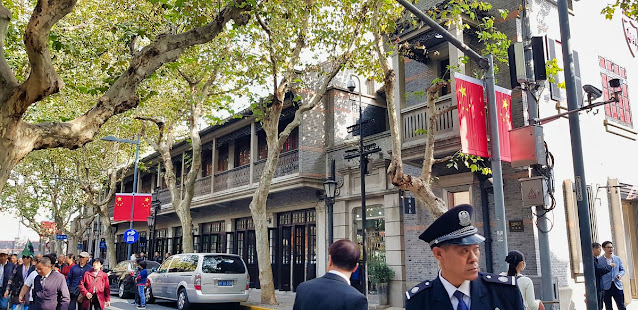








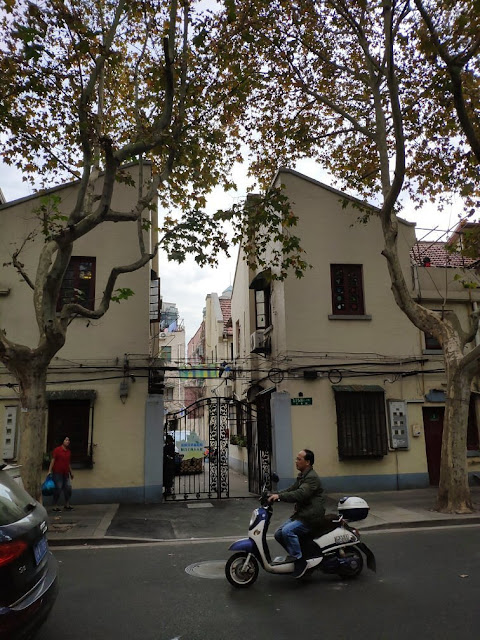



















































Oh how I wish you brought some food back with you! It looks delicious! I'm actually surprised about westernized/ European themed China is, but then again I've never been on the main land. I also enjoyed the pics of the gardens, with the attention to detail to architecture and just the manicured and meticulously displayed flower garden.
ReplyDeleteActually we didn't bring hardly any souvenirs back… just the pix and memories :) We travelled light. The garden was truly amazing (and kinda like a maze). Its structured more like individual "rooms", all connected, rather than open spaces. Very dynamic!
Delete